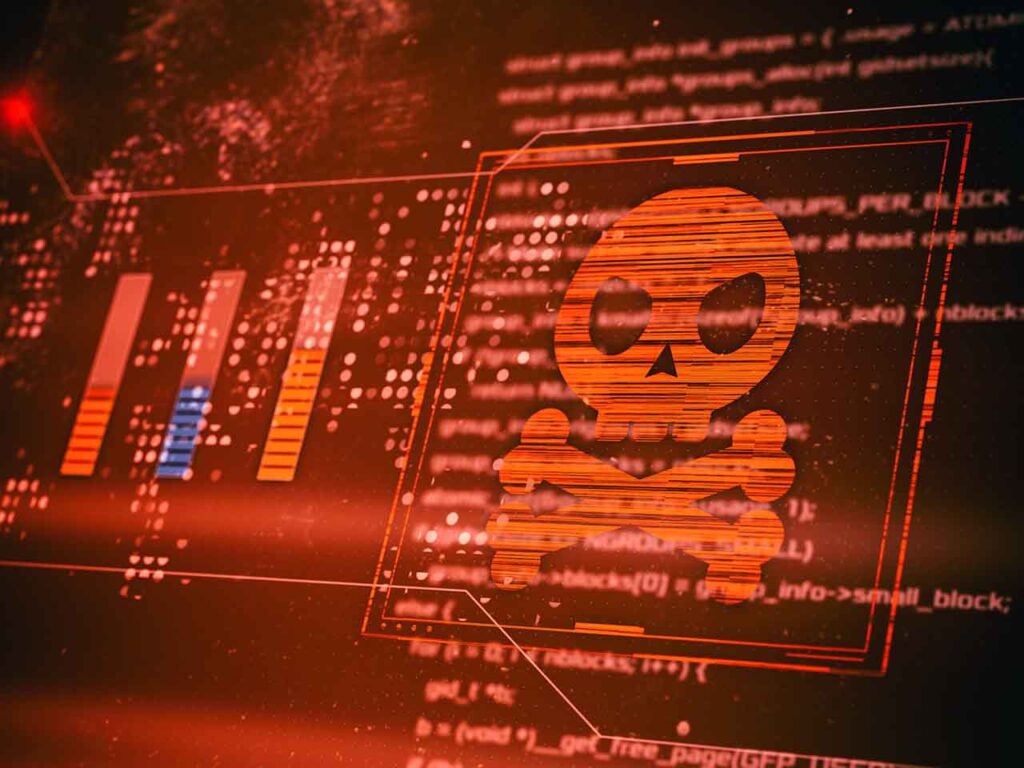The Cyber Kill Chain is a cybersecurity framework developed by Lockheed Martin, which outlines the stages of a cyber attack.
The model is designed to help security professionals identify, understand, and defend against various types of cyber threats.
Stay One Step Ahead of Cyber Threats
By breaking down the attack process into a series of steps, the Cyber Kill Chain allows organizations to anticipate better, detect, and respond to attacks in a systematic and structured manner.
The Cyber Kill Chain consists of the following seven steps:
- Reconnaissance: This is the initial stage where an attacker gathers information about the target, such as open ports, vulnerabilities, network configurations, and employee details. This information can be obtained through scanning tools, social engineering, or public sources like social media and company websites.
- Weaponization: In this stage, the attacker creates a weapon, such as malware or virus, and packages it with an exploit. The exploit is designed to take advantage of a specific vulnerability within the target’s system.
- Delivery: The attacker delivers the weapon to the target using methods like phishing emails, malicious websites, or social engineering tactics. The goal is to get the target to engage with the weapon, such as by opening an email attachment or visiting a compromised website.
- Exploitation: Once the weapon is delivered, the attacker exploits the vulnerability to gain unauthorized access to the target’s system. This can involve executing malicious code, establishing a backdoor, or escalating privileges within the system.
- Installation: After gaining access, the attacker installs the malware or other tools on the target’s system, allowing them to maintain control and execute further actions.
- Command and Control (C2): In this stage, the attacker establishes a connection between the compromised system and their own infrastructure. This allows them to remotely control the target’s system, send commands, and receive data.
- Actions on Objectives: With control over the target’s system, the attacker can now achieve their ultimate goal, which may include data exfiltration, system disruption, or spreading to other systems within the network.
The Cyber Kill Chain is most frequently used by cybersecurity professionals and organizations to improve their security posture.
By understanding the steps in the chain, organizations can implement various security measures to detect, prevent, or mitigate attacks at each stage.
This includes network monitoring, employee training, patch management, intrusion detection and prevention systems, and incident response plans.
How to Mitigate Advanced Cyber Threats Using Each Step of the Cyber Kill Chain

Mitigating advanced cyber threats using the Cyber Kill Chain involves implementing security measures and controls at each stage of the attack process. By focusing on these stages, you can disrupt the attacker’s progress and reduce the likelihood of a successful attack. Here’s how you can mitigate threats at each step of the Cyber Kill Chain:
1. Reconnaissance
- Regularly update your organization’s security policies and procedures.
- Limit the amount of publicly available information about your organization’s infrastructure and employees.
- Conduct regular vulnerability assessments and penetration tests to identify weaknesses in your systems.
- Train employees on cybersecurity best practices and social engineering awareness.
2. Weaponization
- Keep all software and systems up to date with the latest security patches.
- Deploy intrusion prevention systems (IPS) and firewalls to detect and block known attack vectors.
- Use application whitelisting to only allow approved software to run on your systems.
3. Delivery
- Implement email security measures, such as spam filters and phishing detection tools.
- Educate employees about phishing and social engineering attacks and how to recognize them.
- Implement network segmentation to limit the impact of a successful attack.
- Use strong authentication methods, such as multi-factor authentication (MFA).
4. Exploitation
- Regularly update and patch operating systems, applications, and firmware to address known vulnerabilities.
- Deploy security solutions, such as endpoint protection platforms (EPP) and intrusion detection systems (IDS), to identify and block exploit attempts.
- Harden system configurations to reduce potential attack surfaces.
5. Installation
- Implement strong access control policies, including the principle of least privilege, to limit the ability of attackers to install malware or tools on your systems.
- Use advanced malware detection and protection solutions to identify and block malicious software.
- Monitor file integrity and system changes to detect unauthorized modifications.
6. Command and Control (C2)
- Deploy network monitoring tools to detect and analyze unusual traffic patterns, which could indicate a C2 channel.
- Implement egress filtering to limit outbound traffic to known, legitimate destinations.
- Use threat intelligence feeds to identify and block traffic to known malicious IP addresses and domains.
- Encrypt sensitive data to protect it from unauthorized access, even if an attacker gains access to your systems.
7. Actions on Objectives
- Continuously monitor and audit user activities to detect unusual behavior or unauthorized access to sensitive information.
- Develop and maintain a comprehensive incident response plan to quickly contain and mitigate attacks.
- Regularly review and update your organization’s backup and disaster recovery plans to ensure data can be restored in the event of a successful attack.
- Perform regular security awareness training for employees to reinforce best practices and promote a strong security culture within the organization.
By addressing each step of the Cyber Kill Chain, you can significantly enhance your organization’s security posture and reduce the risk of advanced cyber threats.
The Cyber Kill Chain (Video)
"Amateurs hack systems, professionals hack people."
-- Bruce Schneier, a renown computer security professional






